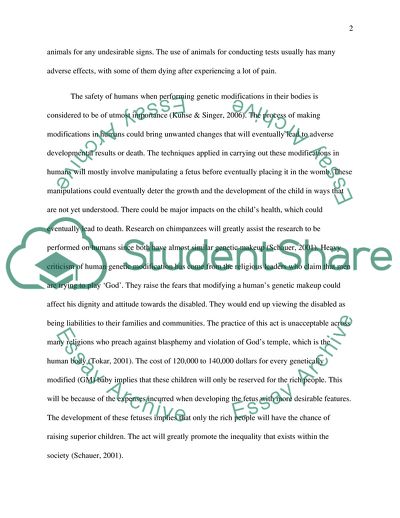Cite this document
(Ethics of Animal and Human Germline Genetic Modification Term Paper, n.d.)
Ethics of Animal and Human Germline Genetic Modification Term Paper. Retrieved from https://studentshare.org/medical-science/1765660-ethics-of-animal-human-germline-genetic-modification
Ethics of Animal and Human Germline Genetic Modification Term Paper. Retrieved from https://studentshare.org/medical-science/1765660-ethics-of-animal-human-germline-genetic-modification
(Ethics of Animal and Human Germline Genetic Modification Term Paper)
Ethics of Animal and Human Germline Genetic Modification Term Paper. https://studentshare.org/medical-science/1765660-ethics-of-animal-human-germline-genetic-modification.
Ethics of Animal and Human Germline Genetic Modification Term Paper. https://studentshare.org/medical-science/1765660-ethics-of-animal-human-germline-genetic-modification.
“Ethics of Animal and Human Germline Genetic Modification Term Paper”. https://studentshare.org/medical-science/1765660-ethics-of-animal-human-germline-genetic-modification.


